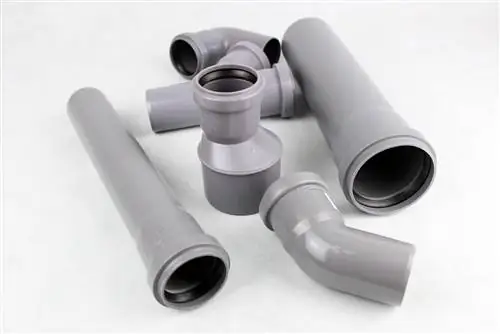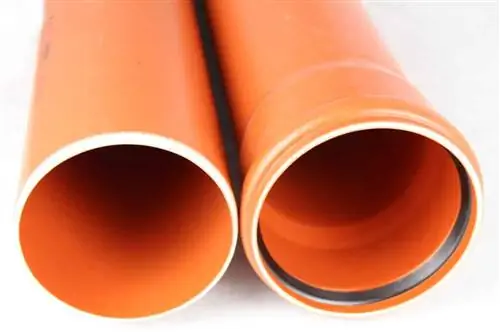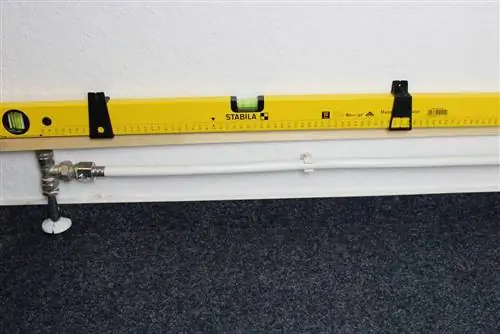- Author admin [email protected].
- Public 2023-12-17 03:39.
- Last modified 2025-01-24 12:45.
Laying sewage pipes is not difficult in itself. This also includes calculating the gradient. If this is not calculated correctly, residue could accumulate and lead to a back-up in the sewer pipe. Bad smells, a poorly draining or even clogged toilet are just some of the possible consequences. The gradient plays a crucial role here.
Calculate slope
Even those who paid close attention in school probably no longer remember how to calculate a gradient or an incline. However, the formula is very simple - so only a small refresher course is required. What is required is the length of the sewer pipes or the length of the route and the height difference. The height difference is divided by the distance.
So:
Elevation difference / distance=gradient
With a height difference of 0.5 meters and a distance of 50 meters, the following calculation results:
0.5 / 50=0.01
In order to convert the value of the gradient into percent, the result must be multiplied by a factor of 100. In the example mentioned it behaves as follows:
0.01 x 100=1.0% slope
Calculation with the rule of three
Another way to calculate the inclination of the sewer pipes is the rule of three calculation. This method is ideal if the incline of the pipes not only needs to be checked, but also achieved. For example, if a gradient of 2% is to be achieved, the wastewater pipes must be laid with an inclination ratio of 1:50. To do this, you now have to calculate how big the height difference must be. Because there is usually little that can be changed about the length.
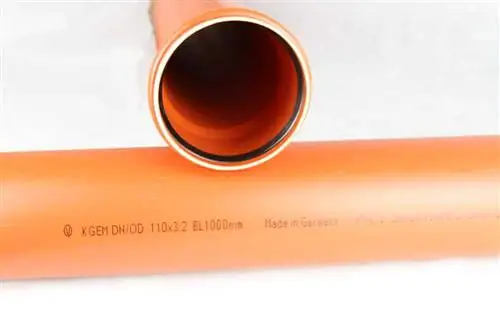
A ratio of 1:50 means that there must be a height difference of one centimeter over a distance of 50 centimeters. But how big does it have to be, for example at one, two or three meters? This can be solved very easily using the rule of three:
50 cm distance corresponds to 1 cm difference in height. This results in a gradient of 2% or 0.02. How big does the height difference have to be if the route is 100 centimeters?
- 1 / 50=0.02
- X / 100=0.02
The distance has doubled, but the result must remain the same. In order for the ratio to be correct, the height difference must also be doubled.
So:
- 1 / 50=0.02
- 1(x2) / 50(x2)=0.02
- 2 / 100=0.02
The same principle applies to all values through the rule of three. Whether the distance doubles or quadruples, the difference in elevation must be multiplied by the same factor. Only then will the relationship continue to be correct. For a distance of 393 centimeters the calculation is as follows:
393 / 50=7.86
7, 86 is the factor by which the distance and the height difference must be multiplied. That means:
- 1 (x7, 86) / 50 (x7, 86)=0, 02
- 7.86 / 393=0.02
Which inclination is correct?
Calculating the slope of the wastewater pipe is important, but only really useful if the correct value is known. In the case of the sewer pipe, this value is determined not only by the route and the difference in height, but also by the flow speed of the water in the pipes. This determines whether as many residues and residues as possible are washed away or remain in the pipes. The flow rate also depends on the diameter of the pipe and any angles at which the pipes have to be laid.
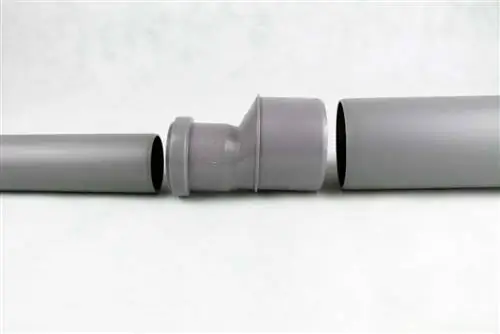
In order to determine the correct value for each case, hydraulic calculations are also necessary. Generally, a flow rate of 0.7 to 2.5 meters per second is recommended for wastewater outside buildings. However, no statement can be made by calculating the gradient alone. This is only used to check and plan the desired gradient.

